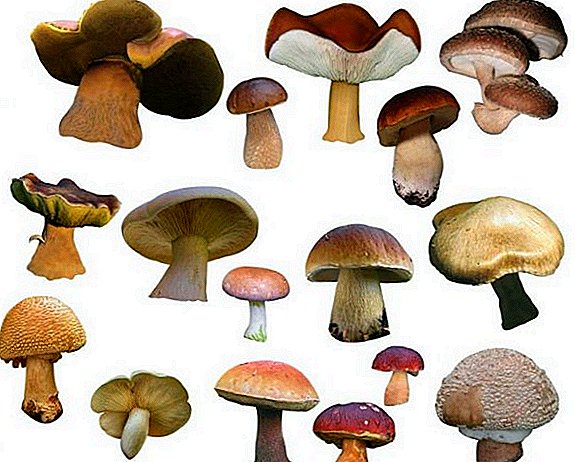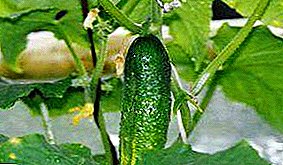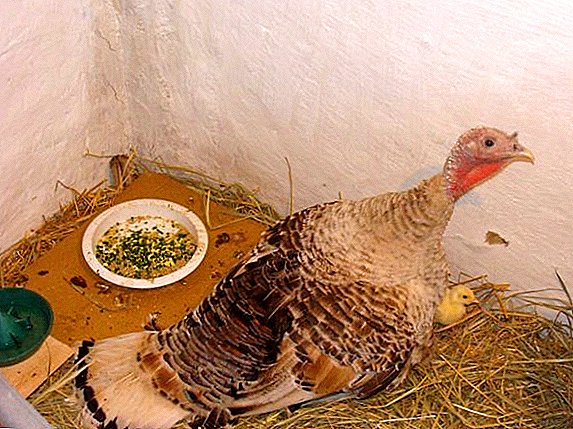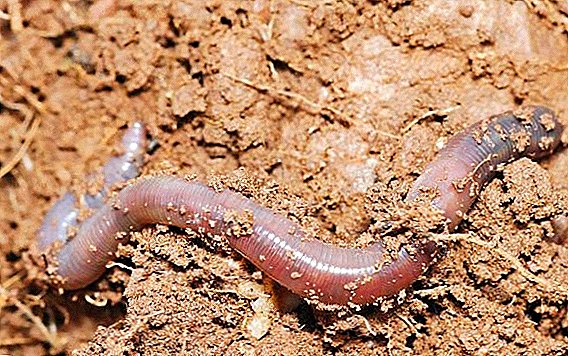 Not only beginner cattlemen, but also experienced cattle are confronted with diseases of cattle. One of the common diseases is demodicosis, or, as it is also called in the common people, scabies. From this article you will learn about pathogens, sources and methods of infection of an animal, symptoms of the disease, its diagnosis and treatment methods.
Not only beginner cattlemen, but also experienced cattle are confronted with diseases of cattle. One of the common diseases is demodicosis, or, as it is also called in the common people, scabies. From this article you will learn about pathogens, sources and methods of infection of an animal, symptoms of the disease, its diagnosis and treatment methods.
Pathogen, sources and routes of infection
Demodecosis, or scabies, is an endoparasitic disease. Its causative agent is Demodex mite, which affects the hair follicles and sebaceous glands in cows. The size of the parasite does not exceed 0.3 mm, its body is worm-shaped, divided into the abdomen and the cephalothorax. In the region of the cephalothorax there is a lyre proboscis.
The tick has short three-segmented limbs. The peculiarity of these ticks is that they live in colonies of several thousand individuals. Demodex females lay eggs from which the larvae hatch in 5-6 days. The whole transformation cycle from egg to tick takes from 25 to 30 days.
The disease most often affects cattle and dogs, but there are cases when a tick infects cats and pigs. Infection occurs through contact with a sick individual, through a farmer’s things or equipment.
Important! Demodecosis reduces productivity, slows growth and weakens the immune system of the animal, as a result of which the cow becomes less protected against other infections.As a result, the disease spreads very quickly, therefore, to prevent the spread of the disease, it is necessary to be extremely careful in working with animals, to regularly examine the herd, and when identifying a sick individual, it must immediately be isolated from the herd. In addition, after working with animals, the farmer must disinfect the clothes in which he worked.

How does it look and where does the body appear
Foci of disease manifest themselves in the head, chest, back and shoulder blades. The tick penetrates into the hair follicle, on its way it destroys the epithelial cells of the root sheath of the hair, both from the outside and from the inside.
Read about other diseases of cattle that are caused by parasites: cysticercosis, hypodermatosis, dictyocaulosis, teliasiasis, anaplasmosis and babesiosis.
As a result of this exposure, the hairs can no longer be restored. The lesion of the follicles of the scalp is accompanied by necrotic processes, which further lead to suppuration. At risk are young individuals aged 3 months and older. The most favorable period for the reproduction of demodex mites is spring-summer.
Symptoms of demodicosis are:
- the presence on the skin of tubercles, the diameter of which does not exceed 10 mm;
- loss of hair at the site of the animal;
- the appearance of white-gray waxy substance in the place of pressing on the tubercles;
- the presence of vortex formations of hair with sticky contents;
- itching and redness in cows is absent.
Did you know? The sense of smell of the cows is weaker than that of many other animals, despite this the cows sniff the ground in the meadow before they start to eat grass. They will refuse to eat, finding, for example, fresh fertilizers.
Diagnostics
Only a specialist is able to make an accurate diagnosis. Therefore, when symptoms are detected during the next inspection, you should contact your veterinarian. Upon detection of characteristic skin bumps, a microscopic examination of their contents is carried out: if there is a scab in the nodule formation, it is removed with tweezers, transferred to glass and examined with a microscope.
If the scab is absent, then take a sample of the contents of the tubercle and in the same way examined under a microscope. In the event that clinical studies have not confirmed demodicosis, in places of the most frequent location of ticks, hair is pulled out at 1.5-2 square meters. cm.  On a surface cleared of hairs, 2 drops of vaseline oil are applied, after which they fold this part of the skin into a fold and use the blunt side of the scalpel to squeeze out ticks. The resulting scraping and hairs are examined under a microscope.
On a surface cleared of hairs, 2 drops of vaseline oil are applied, after which they fold this part of the skin into a fold and use the blunt side of the scalpel to squeeze out ticks. The resulting scraping and hairs are examined under a microscope.
How to treat scabies in cows
Treat scabies can be both popular methods and veterinary preparations. However, it is worth remembering that only a veterinarian can make an accurate diagnosis and treatment.
Important! It is necessary to begin treatment only after confirming the diagnosis, and in each case the treatment is individual in nature, which takes into account age, physical health and the extent of skin lesions.
Anti-scab drugs
For the treatment of demodicosis in cows use:
- Dikrezil. A 0.75% emulsion or suspension is used, and 2-4 liters of acaricidal liquid are used per animal (the volume of liquid depends on the age of the cow). The resulting solution is used to treat a single animal. Spraying is carried out in a special room or shower, where there is a septic tank. The treatment is carried out 1 time in 6 days in the morning, before driving the animal to pasture, or in the afternoon, after resting. The course of treatment is the season of active activity of ticks;
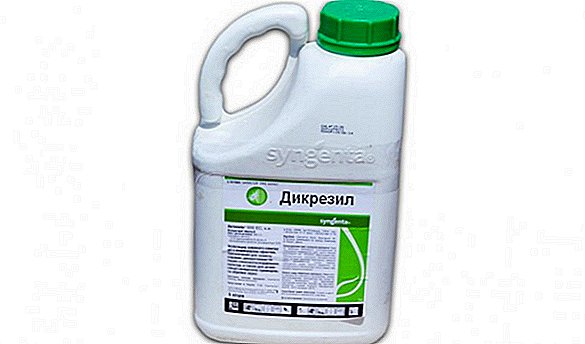
- Ivermek used as a single intramuscular injection. Dosage: 1 ml per 50 kg body weight. For animals whose weight exceeds 500 kg, the injection can be divided into 2 injections;
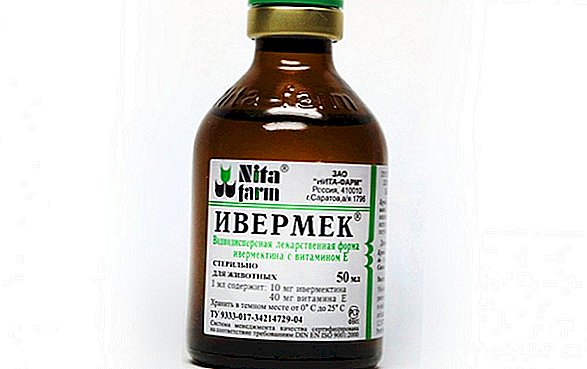
- Sevin Sevinum 1. The suspension, which contains 0.75-1% of the active active ingredient, is used for external treatment of calves aged 3 months and adults. A suspension of 0.75-0.85% is used to treat calves up to 3 months and dairy cows. Consumption of the drug for spraying one individual is from 1-3 liters. Processing is done in the morning once a week throughout the entire season of tick parasitism;
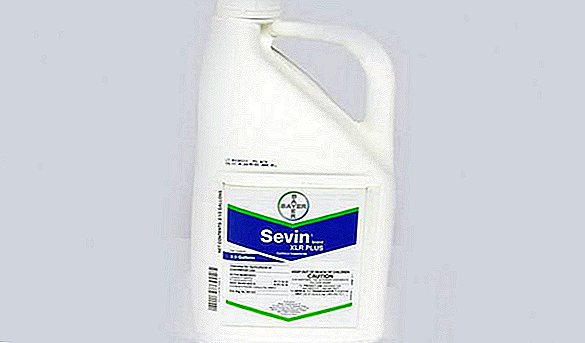
- Acrodex used for aerosol treatment of cattle. The course of treatment is 4 treatments with an interval of 5-7 days, regardless of the season. One aerosol is enough for 5-8 heads.
Folk remedies
As a fight against scabies, many farmers have resorted to popular methods of treatment. First, the animal must be thoroughly washed, and to soften the crust, which was formed on the affected skin, wipe the skin with soapy water in combination with creolin.
After 24 hours, the cow can be washed with a solution based on ash alkali. Such treatment will be an effective addition to the prescribed course of treatment.
Processing facilities and equipment
Do not forget about the fact that the Demodex mite can live separately from the cow, so you should pay special attention to the processing of the room and the paddock, which contains an animal. Every day, it is necessary to clean up the waste products of cows, thoroughly wash the feeders and drinkers using a disinfectant, and then pour boiling water over it.
Important! The tick that lives on the body of a cow does not cause demodicosis in humans.If necessary, the stall is also washed out with an antiseptic. A farmer who can also become a carrier of a tick, after contact with an animal, must wash his hands with antibacterial soap.

Prevention
Scabies is a disease that occurs exclusively under certain conditions. It is enough to keep the room where the animals are kept clean - and the probability of the disease will dramatically decrease.
Learn more about what diseases can hurt cows and how to treat them.To prevent the occurrence of the disease will also help the following measures:
- need to inspect the newly arrived cows on the subject of demodicosis. It is better to hold them in quarantine for some time (isolate from the rest). At the end of the isolation, new members of the herd are treated with a weak cypermethrin solution;
- In early May (after spring warming) cows are examined for the presence of parasites. If there are patients, they are separated from the rest and treated with acaricides. Premises, tools and clothing in contact with infected individuals are disinfected after use;
- in order for the demodectic tick to be harder to attack the representative of cattle, the immunity of the animal should be strengthened. During the winter, some farmers add elemental sulfur to feed, which the pathogen does not tolerate, but only a veterinarian can determine the dosage. There are special Ivomek injections that prevent the tick from infecting the cow. But after their use, the meat of the animal will not be good for several months.
 If you summarize the basic techniques that allow the prevention of scabies in cows, then there are only a few rules: cleanliness of animals and premises, regular inspection of newly arrived and the rest of the herd for patients and maintaining the immunity of animals.
If you summarize the basic techniques that allow the prevention of scabies in cows, then there are only a few rules: cleanliness of animals and premises, regular inspection of newly arrived and the rest of the herd for patients and maintaining the immunity of animals.
Did you know? In the old days, the Slavs believed that it was possible to extinguish a fire caused by a lightning strike using the milk of a black cow.Scabies in cows is an unpleasant disease that can cause significant damage to the farm. To prevent this disease, it is necessary to regularly examine the animals, and when the first signs appear, immediately contact a veterinarian and isolate sick individuals. To prevent the development of the disease can regular prevention.






